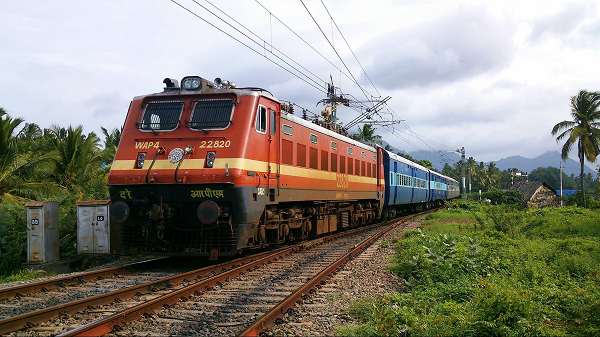
by Editor | May 25, 2021 | Investing, Opinions
 By Taponeel Mukherjee,
By Taponeel Mukherjee,
Export credit agencies (ECAs) have globally played a significant role in promoting trade and investments by providing insurance and funding. It is important for global infrastructure investors and the Indian government to look at ECAs as a significant enabler of much-needed infrastructure investments in India.
This is especially true for new infrastructure projects, or greenfield projects, that need to be funded. The focus on the role of ECAs needs to encompass that of an insurance provider, an investor and a liquidity provider in foreign exchange.
A centralised agency needs to be set up to work with foreign private investors and ECAs. The focus should be on a few specific infrastructure sectors to start with. This will help develop a template for the partnerships to work for all other sectors in the future.
Once the sectors are identified, the focus must be on creating contract templates that can be used to create efficient financing mechanisms. Only once the projects in the pilot sector are implemented should the mechanism be used to fund new sectors. A well-drafted financing and contract mechanism will go a long way in boosting investments in the years to come.
There are a few fundamental advantages that a robust ECA mechanism can provide that will boost infrastructure investments. Firstly, a lot of foreign commercial lenders may not be able to access Indian investments, especially greenfield, due to the perceived high credit-risk involved. The ECA can provide insurance to make infrastructure assets in India more attractive.
Secondly, ECAs, with their credit insurance and political risk insurance, make debt investments more attractive for foreign investors. Debt will be the primary source of funding. ECAs, through their credit-risk mitigating mechanism, greatly assist in boosting debt investments.
Thirdly, ECAs need to work with private investors to look at products that help extend the maturity of the payment stream due from the project or the borrower. This will help foreign commercial banks with capital to deploy in longer-dated infrastructure projects. Simply put, a foreign lender looking for 10-year assets, might be able to finance a 15-year asset if ECAs can design a product that helps in doing so. Being able to extend maturities will make more infrastructure projects feasible for lenders.
Fourthly, ECAs can also assist in boosting infrastructure by creating mechanisms that allow foreign lenders to lend in their home currency. One of the biggest risks foreign lenders in India face is the foreign exchange risk. ECAs can create pools of liquidity that allow lenders to hedge the local currency risk from India.
From a due diligence perspective, ECAs can act as a second layer of analysis and risk management, as each ECA will undertake its own independent risk analysis of projects. Lenders who come through partnerships with such ECAs will be able to finance projects that are likely to be of higher quality and better structured.
The ability of the ECA to do additional analysis and provide the requisite funding mechanism will also encourage more greenfield risk-taking. A well-structured regulatory mechanism in partnerships with multiple ECAs has the potential to provide the required boost to greenfield projects.
The Credit Enhancement Fund announced in the Budget in 2017 can also get a boost by collaborating with ECAs from different countries. The Fund is a great start, but if policymakers can create an environment to encourage ECAs, it will lead to more efficient capital flow within the ecosystem. The aim of the Fund is to provide a boost to infrastructure investments by providing insurance to infrastructure projects. Allowing ECAs from other countries to operate within India will allow even more infrastructure investments to be created.
In a country with a large infrastructure deficit and a banking sector struggling with NPAs, effective mechanisms to improve the flow of credit is essential. ECAs provide a significant source of funding and expertise that must be looked at in greater detail.
(Taponeel Mukherjee heads Development Tracks, an infrastructure advisory firm. He can be contacted at taponeel.mukherjee@development-tracks.com or @taponeel on Twitter)
—IANS

by Editor | May 25, 2021 | Opinions
 By Taponeel Mukherjee,
By Taponeel Mukherjee,
Current global macro-economic news has two key trends that stand out: Monetary policy tightening and fiscal policy expansion. Hawkish commentary by global central banks regarding rate hikes and balance sheet reduction has started to hit the newswires with regularity. On the fiscal policy side, tax cuts in the US have made news.
Regardless of the result, the main takeaway is that as monetary policy becomes tighter, fiscal policy might be used to boost consumption. India needs to ensure that investment opportunities in the country remain attractive — relative to global opportunities.
Central bank meetings globally, from the US Federal Reserve to the Bank of England, have admitted to tight labour markets, wage pressure to the upside and inflationary concerns. As rate hikes and balance sheet reductions are priced in, liquidity will be withdrawn from the system. Not only will this lead to asset price volatility, but the market will pay a lot more attention to the quality of assets.
When money supply gets reduced, assets globally will have to compete that much harder to attract capital. India needs to ensure that its assets remain competitive at a global level on a relative basis even as global central bank balance sheets shrink.
The US tax cuts have been a hotly debated topic. Regardless of the long-term ramifications for the economy and for the government debt-to-GDP ratio, the fact of the matter is that corporate tax rates today are extremely competitive in the US compared to other countries.
Germany just reported a public finance surplus for the year 2017, prompting debate around tax cuts to pass on some of the government surplus to the consumer. As countries globally adopt and explore expansionary fiscal policy, it is important for Indian policymakers to ensure that investment opportunities remain attractive at a global level, and the country remains an attractive destination for foreign capital, especially with a view to bridging the infrastructure gap.
India has certain fundamental advantages that stand out. It has an infrastructure deficit and a growing economy that can use newly-created infrastructure. Hence there is natural demand for an asset in a large economy such as India. Essentially, India has both the need and the required market size to deploy large pools of global capital. But given the “competition” for the global capital pool, the country needs to build on the fundamental strengths to attract the necessary capital.
Any investment at a basic level has a “financial” attractiveness and a “regulatory” attractiveness. As global yields head higher and tax breaks kick in, Indian assets will have to compete even harder on the “financial” aspect. However, this is the time to push ahead with changes that can help boost the “regulatory” attractiveness of Indian assets.
While the bankruptcy resolution mechanism under the Insolvency and Bankruptcy Code (IBC) has been a step in the right direction, greater clarity is needed around Public Private Partnership (PPP) agreements and irrevocability of offtake agreements such as Power Purchase Agreements (PPAs) is essential to provide Indian infrastructure investments a regulatory boost.
PPPs have been used to deliver valuable projects in India, but in many instances they have been mired in problems. We think clarity at the beginning and a more detailed analysis and allocation of risk is essential to ensure that PPPs are successful. The PPP model needs attention because a large part of much-needed infrastructure will have to come through this route. Irrevocability of offtake agreements from infrastructure projects is non-negotiable.
For investors to have faith in the contract to make capital-intensive, long-dated investments, offtake agreements such as PPAs must be respected and honoured. “Bankability” of infrastructure projects can only go up when global investors have greater faith in contract enforceability in the country.
It is thus important for policymakers and the industry in India to be cognizant of global changes and macro-economic moves. Nations always have, and will rightly continue to, compete for much needed capital. India is a compelling investment opportunity, but must build on its inherent strengths to attract the best of global capital.
(Taponeel Mukherjee heads Development Tracks, an infrastructure advisory firm. Views are personal. He can be contacted at taponeel.mukherjee@development-tracks.com or @Taponeel on Twitter)
—IANS


